Visit Adelaide, South Australia
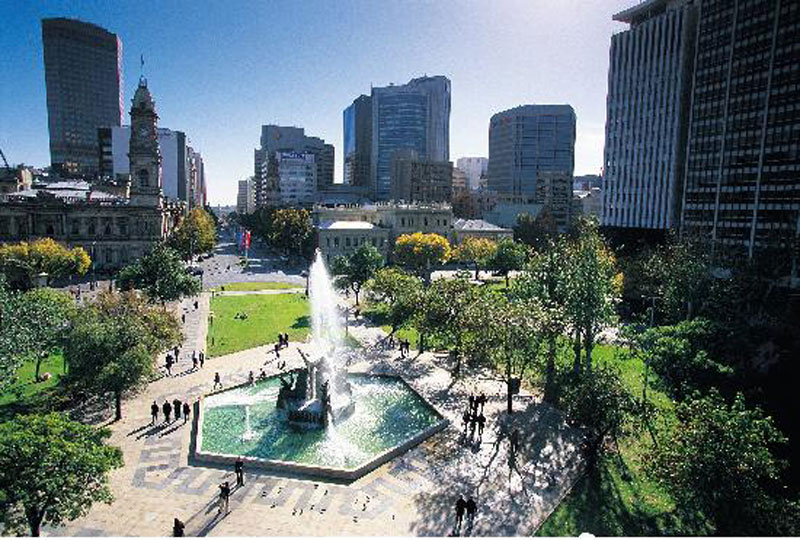
About Adelaide
Adelaide At A Glance: the capital city of South Australia, Adelaide is a place of natural beauty and simple elegance. It city centre has wide flat streets, and is surrounded on all sides by parklands. The urban landscape is highlighted with many elegant colonial buildings, museums, churches and galleries.Adelaide is situated on the Fleurieu Peninsula overlooking the Gulf St. Vincent, bordered by the low lying Mount Lofty Ranges to the east giving the suburbs a roughly north-south rectangular layout. In terms of population, at around 1 million, it is the fifth largest of the Australian capital cities.
Adelaide was established in 1836 as the centre of a planned colony of free immigrants, promising freedom from religious persecution and civil liberties and as such does not share the convict history of other Australian cities, like Sydney and Hobart. Coincidental to that fact, the name Adelaide comes from the German words meaning "Noble Birth". Adelaide has a metropolitan population of just over 1 million, making it Australia's fifth largest city.
Adelaide is often referred to as the City Of Churches, although this is a reflection more on Adelaide's past than its present. Rumour has it that for every church that was built in Adelaide, a public house was also built to serve the less pious.
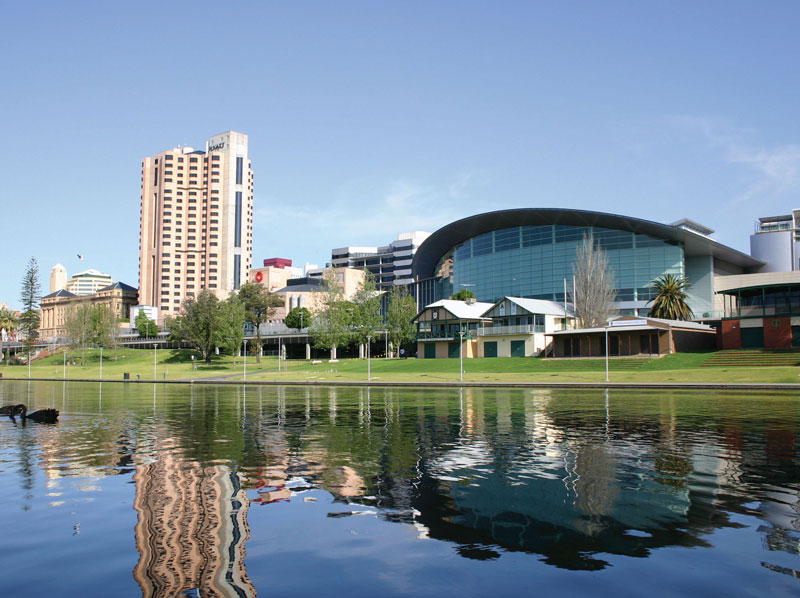
From its earliest, Adelaide attracted immigrants from many countries, particularly German migrants escaping religious persecution. They brought with them the vine cuttings that founded the acclaimed wineries of the Barossa Valley. After World War II, Italians, Greeks, Dutch, Polish, and possibly every other European nationality came to make a new start. An influx of Asian immigrants following the Vietnam War added to the mix. These cultures have blended to form a rich and diverse cuisine and vibrant restaurant culture.
Much of the area around Adelaide was once used for wine grape production, so that wine growing districts (such as the Barossa Valley, for which Adelaide and South Australia are well known) remain within a short drive of the city outskirts.
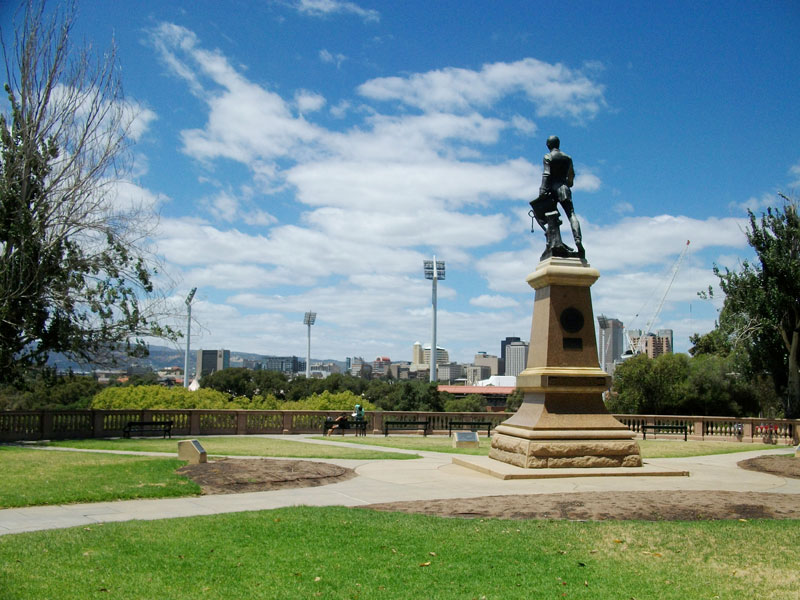
Adelaide's cultural life flourished in the 1970s under the leadership of premier Don Dunstan, removing some of the more puritanical restrictions on cultural activities then prevalent around Australia. Now the city is home to events such as the Barossa Music Festival, the Adelaide Festival of Arts, Adelaide Film Festival, and the Fringe Festival, among others. Womadelaide, a world music event, is now annually held in the scenic surrounds of Botanic Park, emphasising Adelaide's dedication to the arts which has prevailed since the days of Don Dunstan. Adelaide now has a very vibrant and flourishing cafe culture, mainly in the east end of the city.
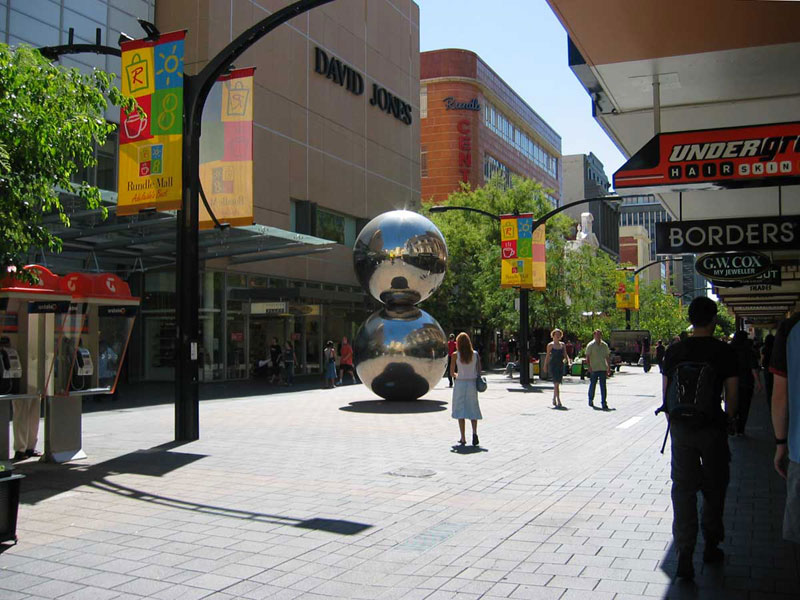
Climate - Best Time To Visit
Adelaide has a hot Mediterranean climate, which equates to mild, wet winters and hot, dry summers. Of all the Australian capital cities, Adelaide is the driest. Rainfall is unreliable, light and infrequent throughout summer. The average in January and February is around 20 millimetres but completely rainless months are by no means uncommon. In contrast, the winter has fairly reliable rainfall with June being the wettest month of the year, averaging around 80 mm. Winter days are generally cool and at times can feel quite cold if there is wind about. Frosts are rare, with the most notable occurrences having occurred in July 1908 and July 1982. There is usually no appreciable snowfall in Adelaide, except on rare occasions at Mount Lofty and in some places in the Adelaide Hills.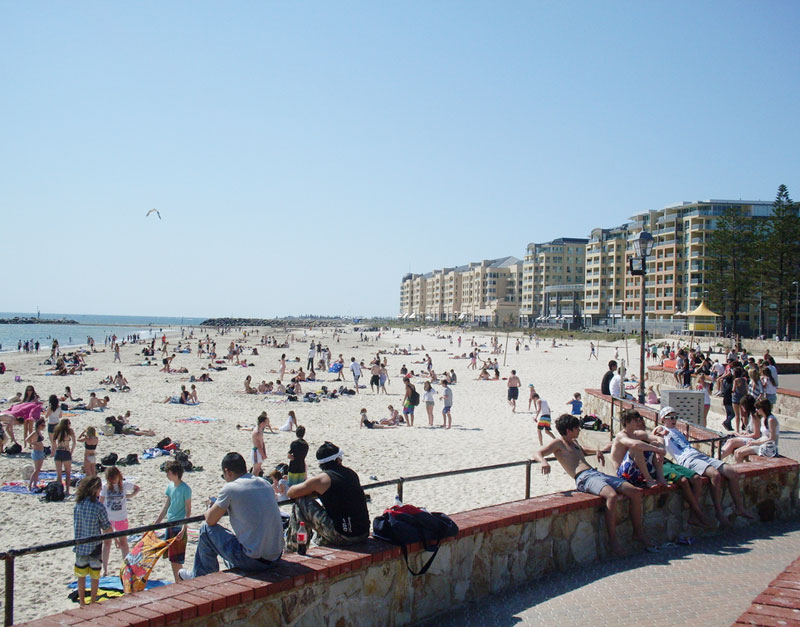
Glenelg Beach
December to February are the warm months in Adelaide and perhaps because of this, are the peak tourist season in Adelaide. This time is generally viewed as the best time to visit Adelaide with plenty of opportunities to go sun bathing on the beach or sweating it out with the numerous activities in the great Australian outdoors or on the beach. Outdoor cafes are perfect for a cool drink and a sumptuous bite to eat. However, do keep in mind that during the summer months, the temperatures in the outback touch the scorching forties and that Adelaide is the closest Australian capital to the outback.
Adelaide is noted for its fickle weather in the Spring months from September to November, however temperatures during this time are generally very pleasant and bad weather days generally come and go quite quickly. June is the wettest month; be prepared to have some days involving indoor activities if visiting Adelaide then.
Climatic Averages:
Mean January maximum temperature - 28.8°C
Mean January minimum temperature - 16.8°C Mean January daily sunshine - 10.5 hours
Mean July maximum temperature - 15.3°C
Mean July minimum temperature - 7.4°C
Mean July daily sunshine - 4.9 hours
Mean annual rainfall - 558 mm
Wettest month on average - June, 83 mm
Driest month on average - February, 14 mm









